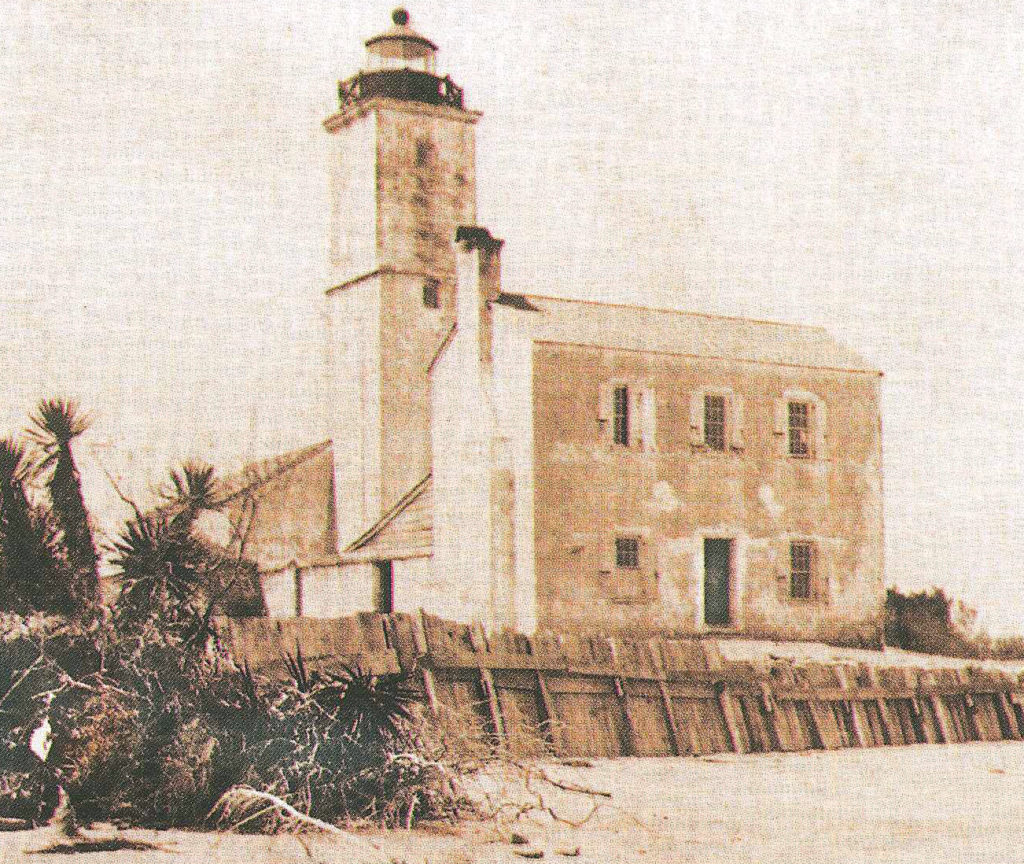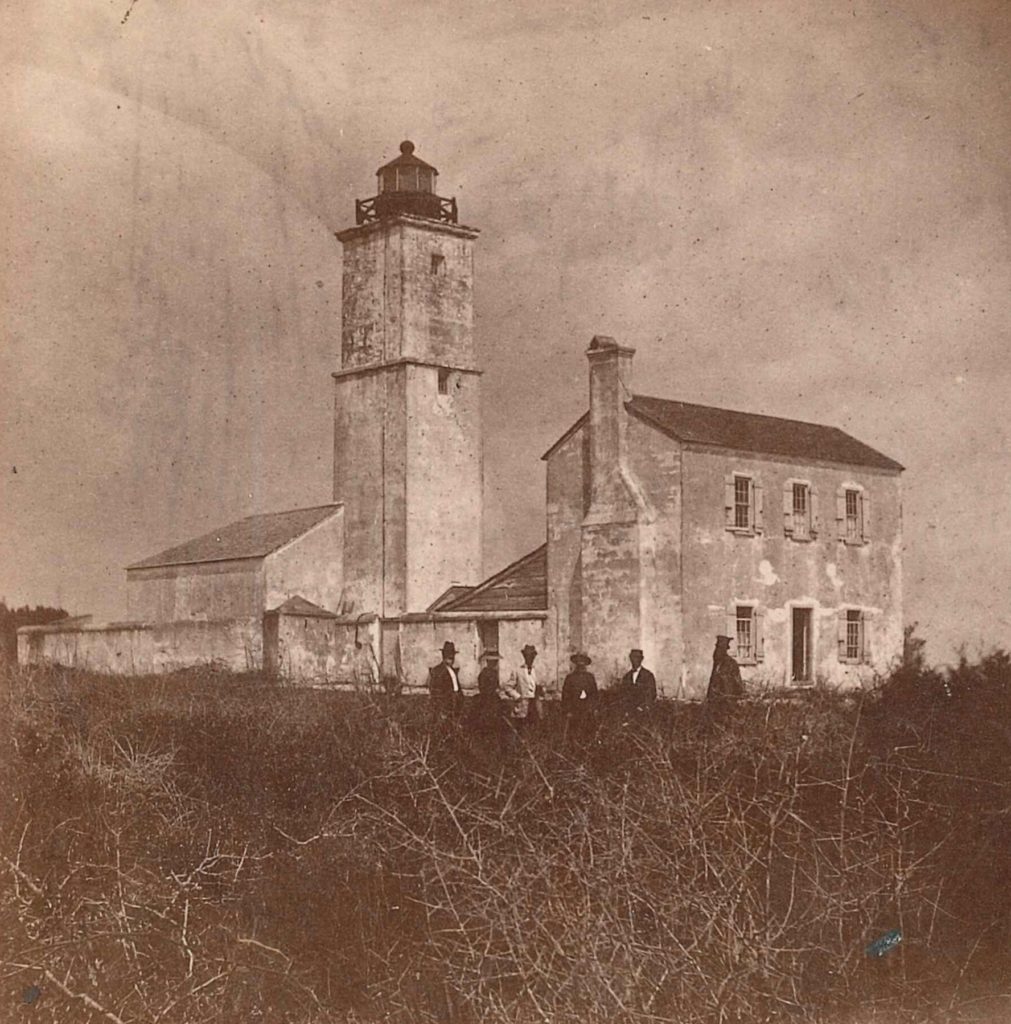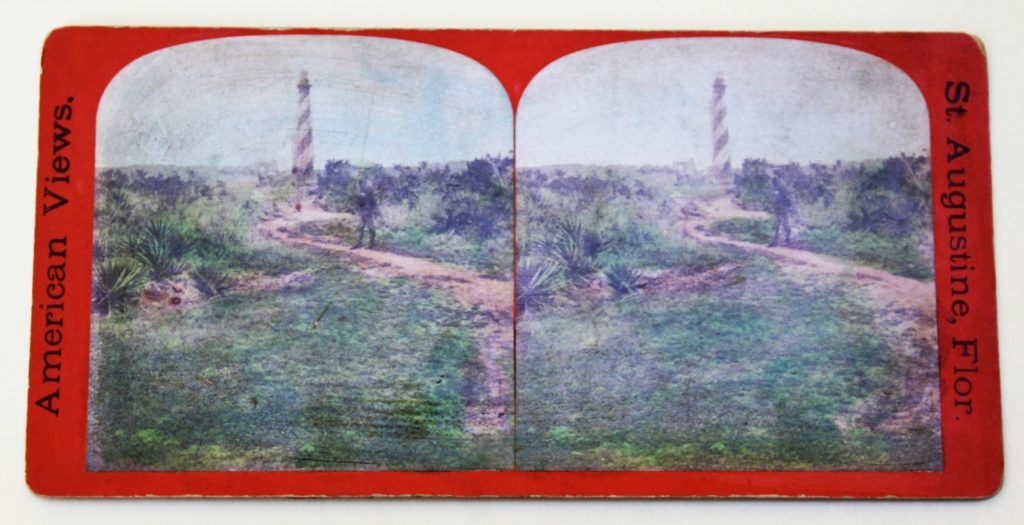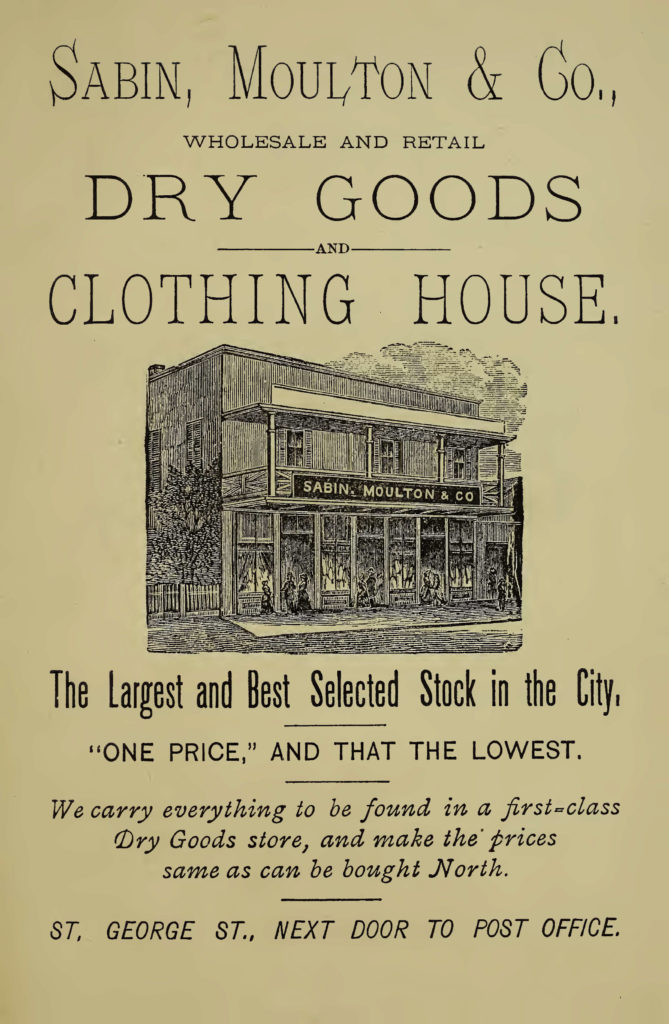By Jay Smith
“Where’s the elevator in this thing?” A young woman who couldn’t be more than 30 asks me as I stand at the top of the tower welcoming her to the observation gallery. You might be amazed at how often that question gets raised during a normal day. Granted, I have gained a new appreciation for Paul Pelz for having the forethought to add landings to his design for our Lighthouse! What we often forget is that the men and women of the United States Lighthouse Establishment climbed those stairs often more than once a day usually carrying oil or perhaps something heavier and did so without a second thought!

As we begin this series on lighthouse keepers and their families, we must consider how life at the light station in St. Augustine differed from life at other stations. The keepers and their families functioned within the larger community. They were born, married, and died here, and they left their imprint within the larger St. Augustine community. Most light stations were too remote for such interaction but early on, our Lighthouse welcomed visitors and residents alike.
The keepers became local celebrities for their time and familiar figures in the city. Although some of the keepers have retained that position (such as William Harn), others have become obscured by time and history.
One of these obscured keepers in our Light Station’s history is also perhaps the most important: William H. Russell. When Russell began working at the Light Station, there was only the single keeper position. The Lighthouse complex consisted of the tower and the Keeper’s House with a wall enclosing a courtyard. Russell started in April 1873 during the construction of the current tower and then resigned in April 1875. During his term, he oversaw the move from the old tower into the new one and most importantly, the lighting of the new first-order Fresnel lens. Other than his service at the light station, aspects of William Russell’s life remained unknown, and that is where I began looking for information.

Utilizing online sources and the St. Augustine Historical Society Research Library, I have been able to gain a bit more information about Russell and his family. Russell was born in 1854 and grew up in Orange Mills, Florida, a community along the St. Johns River near Palatka. His father, Thomas T. Russell, was born in Beaufort, South Carolina, and moved to Florida in 1816 to take advantage of the uncultivated land that the new frontier of Florida offered to planters and farmers. This period between the end of the Spanish occupation in Florida and Florida’s statehood sees an enormous flood of planters and farmers into the territory from states to the north. Florida’s acres of uncultivated, virgin land was supposedly capable of growing anything in abundance including the cotton that by this time had drained nutrients from the soil of plantations to the north of nutrients.
According to the 1850 census, Russell held 300 acres of land in St. Johns County and on January 18, 1861, he purchased another 40 acres of land in Putnam County along Dunn’s Lake (today Crescent Lake). The fact that he paid cash for the lands means that he was a successful planter since cash throughout the antebellum period and into the Civil War was a scarce commodity.

Thomas Russell’s role as a planter and his apparent wealth means that he held a prominent place in the society of northeast Florida. In 1843, Russell is named as the Receiver of Public Moneys in St. Augustine upon the resignation of John Fontaine. Such positions placed planters like Russell in the appointments of controlling federal and state assets including cash and land. These positions were almost always political in nature. The planters, in order to maintain their control over politics, often kept farmers and landowners (from the lower classes) from these types of positions and, in turn, rewarded each other with land grants and financial support to insure their positions would remain intact. Therefore, we can assume Thomas Russell maintained a prominent place within society and he uses that prominence and becomes the publisher of a newspaper called the News. In the spring of 1845, he moved to Jacksonville to begin publishing a newspaper for the Whig Party called the Florida Whig. He remains at the paper for a year and then returns to St. Augustine.
What all of this tells us about William Russell, Thomas’s son, is that it points to a number of important elements about William Russell’s life. First, remember that the St. Augustine of the 1840s is vastly smaller in population than the city of today. Like other positions with the government (federal or otherwise), the keeper position at St. Augustine was one that most people defined as political in nature. Thomas Russell probably wielded his influence and got his son, William, appointed as keeper. The work would have been tough to be sure, but William grew up around farming so he was familiar with hard work and he was only nineteen years old. However, once the move to the new tower is complete, William resigns his position in 1875 and Francis Philip Fatio Dunham assumes the keeper position at St. Augustine.
So what becomes of William Russell following his time as keeper? On October 27, 1879, he marries Rosalia Baya, a member of a prominent Menorcan family in the city. The priest who performs the ceremony, Father Stephen Langlade, is from La Puy, France, the same city where the Sisters of St. Joseph departed for St. Augustine. Therefore, we can assume that Bishop Verot, who invited the Sisters to St. Augustine to teach the young people here, also asked Langlade to come as well. Langlade met with much success in the Mill Creek and Elkton communities among the Menorcan families living outside of St. Augustine’s city limits.
Russell returns to serve in the St. Augustine Lighthouse under William Harn in 1880 and gets promoted to First Assistant but resigns again the following year. He remerges in 1886 as a clerk in the firm of Sabin, Moulton & Company, a local business selling general merchandise at the corner of Bridge and Marine Streets. Between 1880 and 1885, Rosalia dies and William has three children to raise without her. Around 1890, William enters into a partnership with John Brannon and opens a clothing store in St. Augustine. The partnership runs into trouble in 1893 when a New York firm sues the partners for nonpayment on the loan they received. As you might expect, the partnership dissolves and the inventory in the store is confiscated by Sheriff Perry to pay off the debt.

The final mention of William Russell is an article from The St. Augustine Record on June 14, 1900, that laments the loss of a man “well known in St. Augustine, having been born and reared in this city.” This man is William Russell. He died in the early morning around 5:30 am in the home of his sister. The article does indicate that he suffered from ill health for quite some time prior to his death. Although the article mentions that Russell was buried in the Catholic cemetery, there is a record of his burial in Evergreen Cemetery. I was not able to locate a headstone for him there.
What I find most interesting about William Russell is how connected his family was to the City of St. Augustine. His father served in several very powerful political positions in the City and Russell received the benefit of that connection. Like many other children of prominent citizens, William married into another well connected family, the Baya family. Ironically Russell was well poised for a position of political prominence as a plantation owner with large landholdings, yet he turns his back on that lifestyle and chooses rather to focus on being a merchant and occasionally a lighthouse keeper. St. Augustine at this time is undergoing some changes itself which William’s life indicates.
Previously a frontier town, St. Augustine was becoming a wealthier and more important city. As the population grew, the City’s trade connections developed. Where does William Russell and his partner go to borrow funds for their enterprise? They rely upon a New York firm suggesting that St. Augustine’s port maintained very close ties to the trade coming in and out of New York. St. Augustine was becoming a busier port and capable of sustaining trade in luxury goods like fine clothing and fashion and there were citizens there capable of sustaining a market for these items.
As we look at the men and women of the St. Augustine Lighthouse, be aware of the role that these people played not just in the history of the Light Station, but within the history of the city. Most Light Stations were remote and functioned without much interaction with the city or town they served; this was definitely not the case here.

